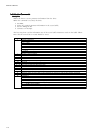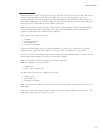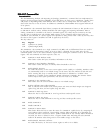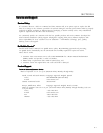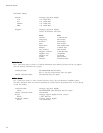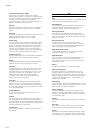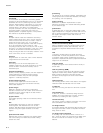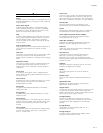
GLOSSARY
GL – 6
PP
PP
P
parallelism
1. The condition of two planes or lines being parallel.
Important in disk drives because a lack of it in mechanical
assemblies can result in positioning inaccuracy. More
precisely: planes-coplanar; lines-colinear. 2. Is the local
variation in disk thickness measured independently of
thickness itself. 3. The ability of a multiprocessor
computer to allocate more than one processor (CPU) to a
computing problem, where each CPU works on a
separate problem or separate segment of that problem.
Also referred to as parallel processing.
parity
A simple method of data error detections that always
makes numbers either odd or even, using an extra bit in
which the total number of binary 1s (or 0s) in a byte is
always odd or always even; thus, in an odd parity
scheme, every byte has eight bits of data and one parity
bit. If using odd parity and the number of 1 bits
comprising the byte of data is not odd, the ninth or parity
bit is set to 1 to create the odd parity. In this way, a byte
of data can be checked for accurate transmission by
simply counting the bits for an odd parity indication. If the
count is ever even, an error is indicated.
partition
A logical section of a disk drive, each of which becomes
a logical device with a drive letter.
peak shift
The shifting in time of the zero-slope portion of a
readback voltage from the values contained in the write
current waveform. Sometimes incorrectly used to
describe bit jitter.
peripheral equipment
Auxiliary memory, displays, printers, and other equipment
usually attached to a computer system’s CPU by
controllers and cables. (They are often packaged
together in a desktop computer.)
phase locked loop (PLL)
A circuit whose output locks onto and tracks the
frequency of an input signal. Sometimes incorrectly
called a data separator.
phase margin
Measure in degrees of the amount of difference
between excursions from the window center where flux
reversals can occur and the edge of the data window.
Similar to window margin.
physical sector
The smallest grouping of data on the hard disk; always
512 bytes.
PIO
Programmable Input Output. A means of accessing
device registers. Also describes one form of data
transfers. PIO data transfers are performed by the host
processor using PIO register accesses to the data
register.
plated thin film media
Magnetic disk memory media having its surface plated
with a thin coating of a metallic alloy instead of being
coated with oxide.
processing
The process of the computer handling, manipulating and
modifying data such as arithmetic calculation, file lookup
and updating, and word pressing.
pulse crowding
Modification of playback amplitude due to super-
positioning of adjacent flux reversal fields being sensed
by the read/write gap.
pulse detect
A digital pulse train in which each leading edge or each
edge corresponds to a magnetic transition read from the
disk. If transition qualification circuitry exists in the drive,
this signal is the output of same. Also known as
transition detect.
RR
RR
R
random access memory (RAM)
Memory designed so that any storage location can be
accessed randomly, directly and individually. This is
contrasted to sequential access devices such as tape
drives.
read
To access a storage location and obtain previously
recorded data. To sense the presence of flux reversals
on magnetic media. Usually implemented such that a
dynamic flux amplitude will cause a proportional electrical
output from the transducer.
read gate signal
A digital input signal which causes the drive circuitry to
recover data.
read only memory (ROM)
A form of memory which cannot be changed in formal
operational modes. Many different types are available.
RAM is used for permanent information storage.
Computer control programs are often stored in ROM
applications.
read/write head
The recording element which writes data to the magnetic
media and reads recorded data from the media.
re-calibrate
The action of moving the head of a disk drive to cylinder
zero.
recoverable error
A read error, transient or otherwise, falling within the
capability of an ECC mechanism to correct, or able to
overcome by rereading the data in question.
rotational latency
The amount of delay in obtaining information from a disk
drive attributable to the rotation of the disk.
run-length limited
An encoding process that repositions data bits and limits
the length of zero bits in order to compress information
being stored on disks.
run-length limited encoding
A recording code. Sometimes meant to denote “2.7
RLL” which can signify 1.5 times the bits as MFM, given
the same number of flux reversals in a given lineal
distance.



